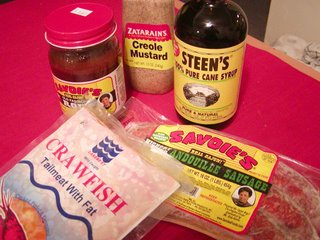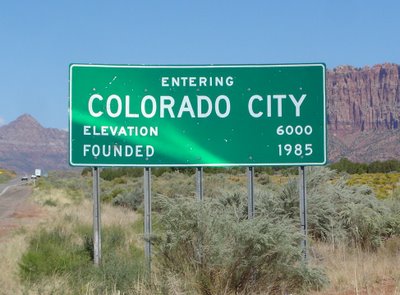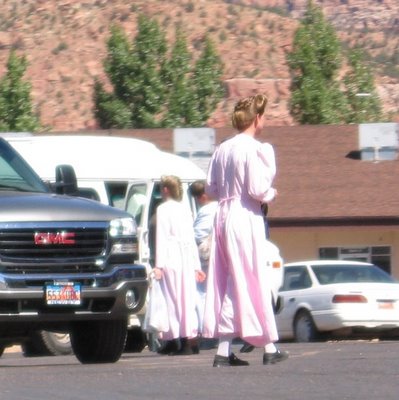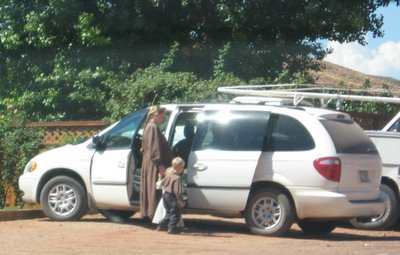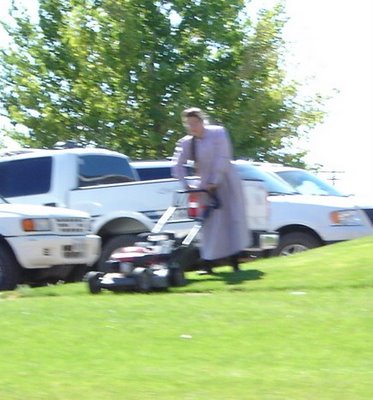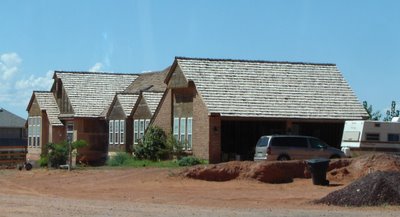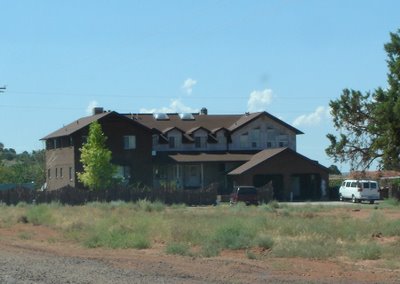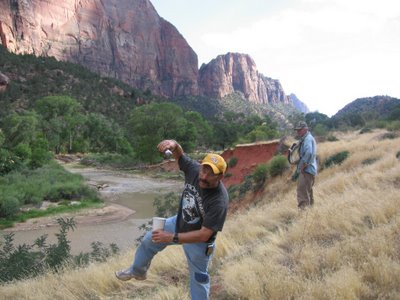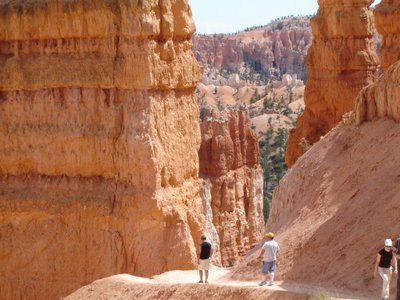 I've discovered the magical, wondrous world of crockpots.
I've discovered the magical, wondrous world of crockpots.One of my new San Diego friends is a connoisseur of crockpotting. He makes everything in his: meatloaf, stew, soup, pork chops, baked beans. After hearing about his food exploits I had to try it myself. So I bought the biggest crockpot I could find at my neighborhood BigLots and started experimenting.
My first attempt, at meatloaf, was less than successful. I readjusted the temperature mid-way through the cooking process and forgot to restart the pot. Six hours later I arrived home with much anticipation only to find a room-temperature, half-cooked, two-pound mound of ground beef well on its way to spoilage.
Happily, I quickly figured out my mistake and the meals I've attempted since have all been successful.
One of the things I love most about crockpot cooking is that it closely mimics the cooking style that I learned from my Maw Maw (grandmother in Cajun speak). Practically everything is cooked in a single pot at a low temperature for a good while - usually the longer the better - until fat is rendered from meat, flesh peals easily from bone, vegetables break apart and blend in with gravy, and flavors mix and fuse into new ones.
 My latest crockpot meal is traditional New Orleans red beans (shown in pictures that can be made larger by clicking on them).
My latest crockpot meal is traditional New Orleans red beans (shown in pictures that can be made larger by clicking on them).Here's how I did it:
Ingredients
- One 1 pound bag of red kidney beans (Camilla if you can find the brand) soaked in water overnight
- One large onion, finely chopped
- Three stalks of celery, finely chopped
- Seasoning ham (I usually use a good sized ham hock)
- Two minced garlic cloves
- One bay leaf
- One cup of chicken stock
 What to do
What to do- Throw everything into the crockpot and fill with water until the liquid clears the bean mixture by about an inch and a half. Cover with the lid, set the temperature on high and cook for 10 hours. Then go do something fun and productive with your day.
- When you get home, 10 hours later, uncover, stir and mash those beans real good, but make sure you leave the mixture lumpy
- Continue cooking with the lid off and stir periodically until the beans reach a medium thickness.
- Season with cayenne pepper, salt and hot sauce.
If you've had red beans before you know they're usually served on rice with grilled sausage or fried chicken on the side. Ca, c'est bon!
Some of you red bean purists are saying, "But Keith, what are you doing cooking and eating red beans on a Wednesday?" The rest of you should know that this dish is a traditional Monday meal in New Orleans. In fact, many restaurants in the city only serve red beans and rice on that day of the week. I figure the rule doesn't apply once you're west of the Rocky Mountains.
Coming in the future: my crockpot versions of jambalaya, smothered chicken and okra, gumbo and catfish courtbouillon.
